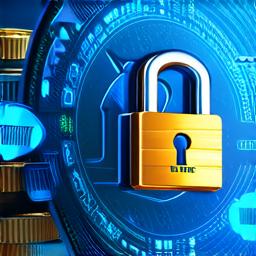Blockchain technology has revolutionized the way we conduct transactions, store data, and ensure security and transparency. However, as with any new technology, there are concerns about how to maintain a fair and free blockchain system. In this article, we will explore what keeps the blockchain fair and free, including its decentralized nature, consensus algorithms, and smart contract protocols.
Decentralization: The Foundation of a Fair Blockchain

The decentralized nature of the blockchain is one of its key features that ensures fairness and freedom. Unlike traditional systems, where there is a central authority controlling the network, a blockchain is a distributed ledger that relies on a network of nodes to validate transactions and maintain the integrity of the system. This means that no single entity has control over the blockchain, making it resistant to censorship and manipulation.
For example, in the case of Bitcoin, the decentralized nature of the network ensures that there is no central authority controlling the issuance of new coins or setting transaction fees. Instead, these decisions are made through a consensus mechanism called proof-of-work (PoW), which relies on miners to validate transactions and add them to the blockchain in exchange for newly minted bitcoins.
Consensus Algorithms: Ensuring Fairness and Security
Another key feature of the blockchain is its consensus algorithms, which are designed to ensure that all nodes on the network agree on the state of the ledger. Consensus algorithms can be divided into two categories: proof-of-work (PoW) and proof-of-stake (PoS).
In PoW, miners compete to solve complex mathematical puzzles in order to validate transactions and add them to the blockchain. The first miner to solve the puzzle is rewarded with newly minted coins, and the process repeats itself until all nodes on the network agree on the state of the ledger. This ensures that the network remains secure and resistant to attacks.
In PoS, instead of relying on miners to validate transactions, nodes on the network are selected to create new blocks based on the amount of cryptocurrency they hold. This reduces the computational power required to validate transactions, making it more energy-efficient and environmentally friendly.
Smart Contract Protocols: Automating Fairness and Freedom
Smart contracts are self-executing programs that run on the blockchain and automate the enforcement of rules and regulations. These contracts are written in a programming language and can be used to execute a wide range of tasks, from buying and selling goods and services to managing complex financial transactions.
One example of how smart contracts can ensure fairness and freedom is through the use of decentralized autonomous organizations (DAOs). DAOs are self-governing entities that use smart contracts to manage their operations and make decisions. They are designed to be transparent, accountable, and free from external interference, making them ideal for applications where trust is a concern.
Real-Life Examples: How Blockchain Ensures Fairness and Freedom
There are many real-life examples of how blockchain technology ensures fairness and freedom. One such example is the use of blockchain in voting systems. By using a decentralized and transparent ledger, blockchain technology can ensure that votes are counted accurately and securely, without the risk of fraud or manipulation.
Another example is the use of blockchain in supply chain management. By using a distributed ledger to track goods from production to delivery, blockchain technology can ensure transparency and accountability throughout the entire supply chain, making it easier to detect and prevent fraud and improve efficiency.
